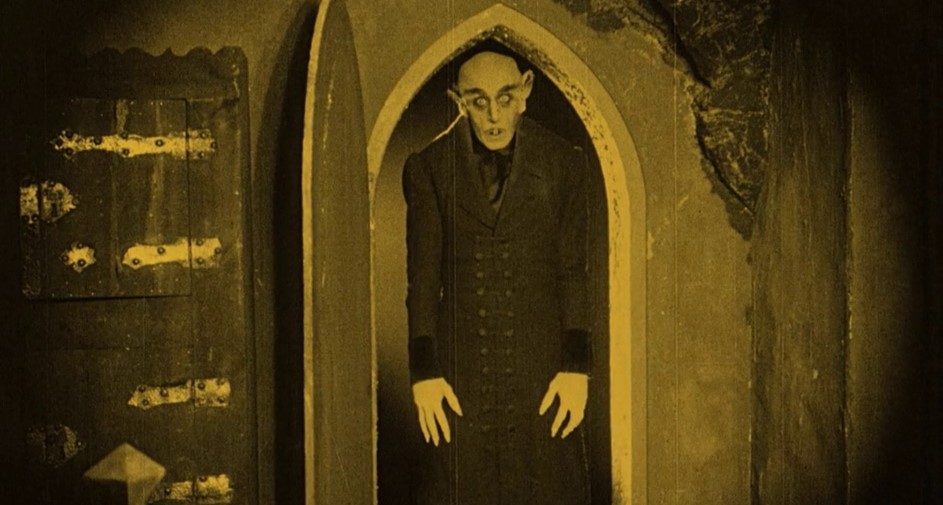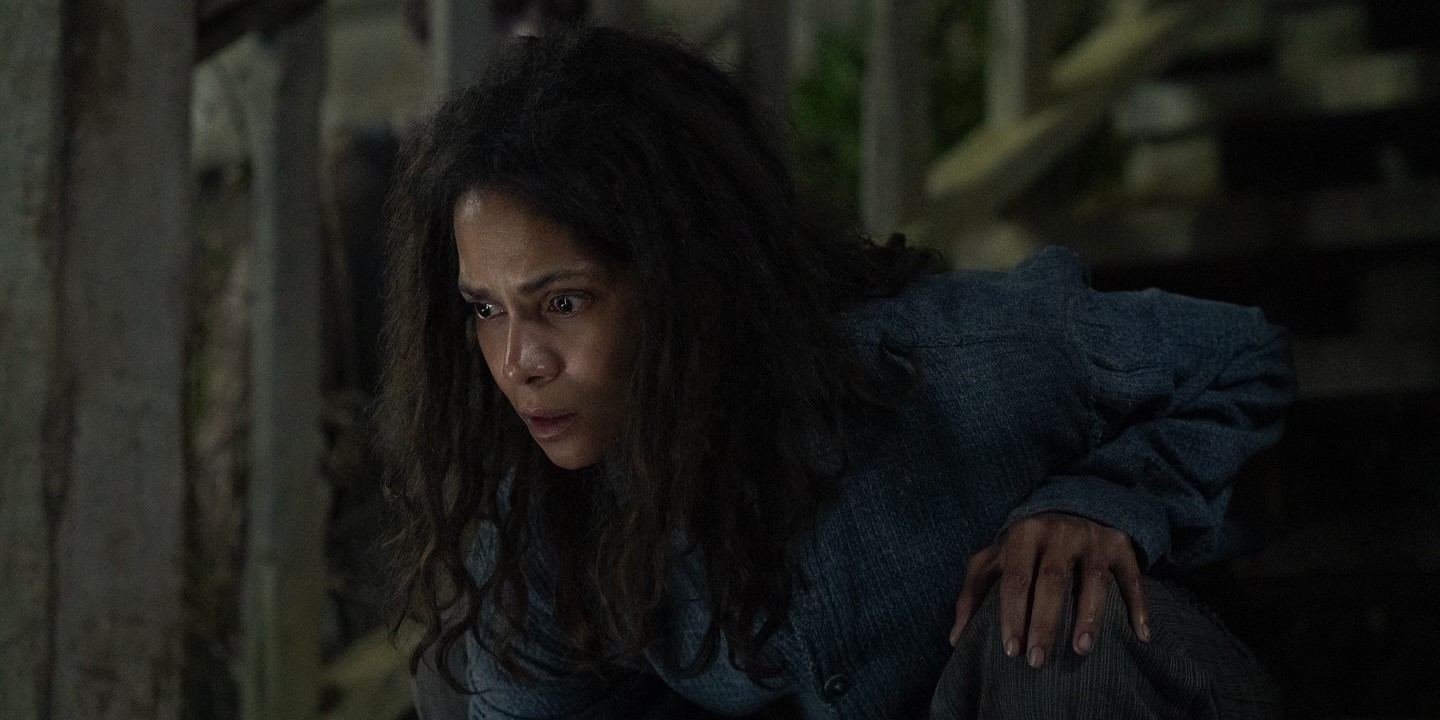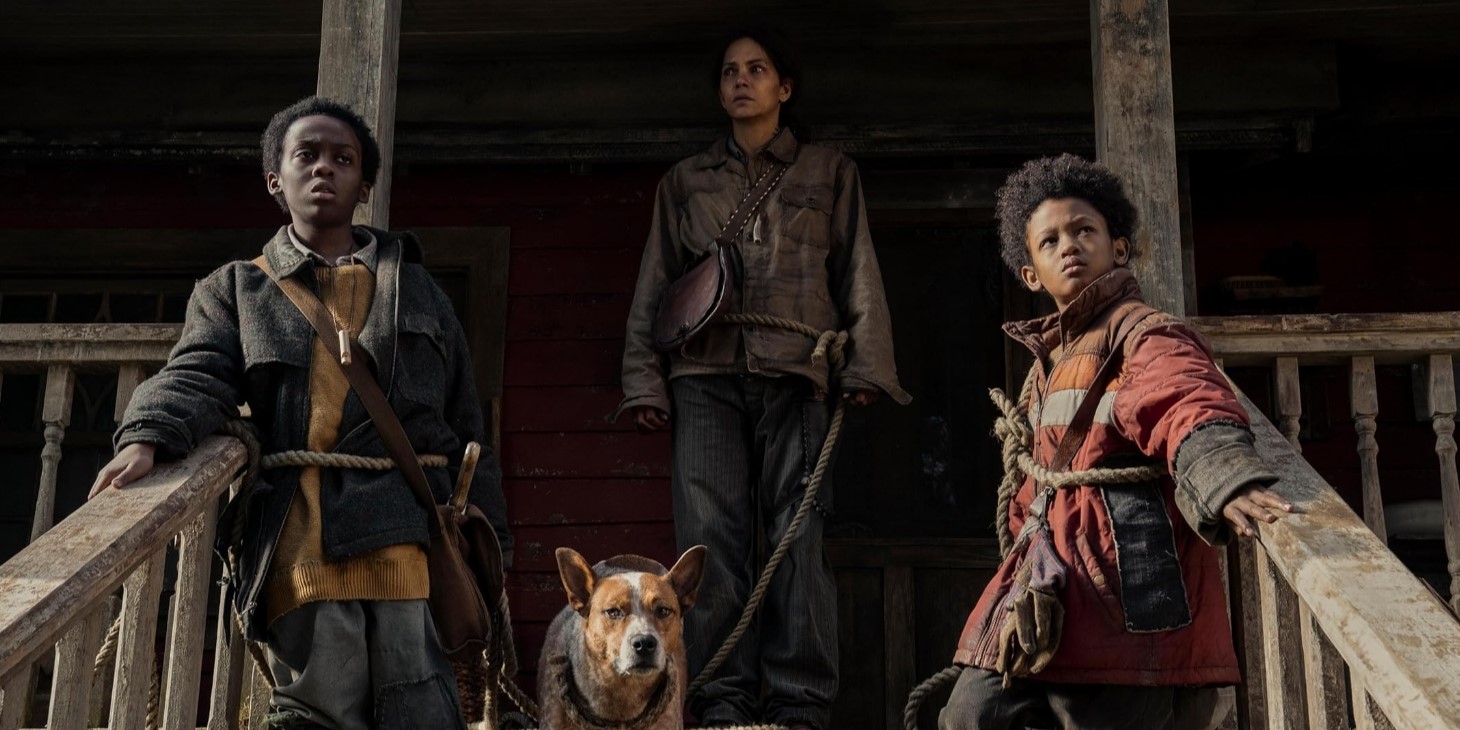Helmed by Alexandre Aja, ‘Never Let Go’ revolves around a mother (Halle Berry) and her two children living in a desolate cabin deep in the woods after a cataclysmic event. The mother grills rules about staying safe from an all-consuming evil into both her sons as they forage for resources around their house. However, as the sons begin to doubt the precautions taken by their mother – the only adult they have known since birth – their ritual is broken, and a series of bone-chilling events create uncertainty regarding the story’s real villain. With unsettling and claustrophobic themes of mental illness interwoven with the supernatural and the unknown, the horror film creates a narrative that feels refreshingly new yet somehow familiar.
Never Let Go Shifts Its Horror Between Grounded and Supernatural Elements
‘Never Let Go’ is a work of fiction written by KC Coughlin and Ryan Grassby that weighs the threat of a perceived evil outside one’s home against the inadvertent danger of a parent going too far to protect their children. It explores the socially relevant tendency of caretakers to chain their dependents to a cocooned haven and eventually make it a prison. “We wanted to tell a story about a family, and how far someone would go to protect their loved ones from the darkness of the world,” said KC Coughlin when he and Ryan Grassby were interviewed about the film. “And we want to take a critical look at that and see how you can go too far in trying to shelter your loved ones from the darkness.”

In addition to the darkening family dynamics, the writers were drawn to the idea of an evil force limited by the sanctuary of a home, creating a compelling horror premise for the film. “We love the idea, conceptually, of the embassy, a place where an evil force outside didn’t have jurisdiction and wouldn’t be able to come inside,” added Ryan Grassby in the aforementioned interview. If the concept seems familiar, that’s because it is rooted in folklore, religion, and literature regarding the dynamic between the sanctuary of a home and its protection from evil. The most popular example of this dates back to 19th-century gothic writers creating the myth of the vampire, an evil entity that could not step inside your home unless invited.
Religious symbolism plays a role in introducing this concept as well. The threshold of a home was sometimes seen as a metaphorical or literal boundary blessed or protected from evil. Crosses, prayers, or blessings were often used to protect homes from demonic forces, and the doorway often served as a barrier. A similar story can be found in Valmiki’s Indian epic, ‘Ramayana,’ where a Lakshmana Rekha (a blessed line in the soil) is drawn by Lakshman around his loved ones to create a haven, preventing any evil entity from entering it.
Alexandre Aja Deliberately Enhanced the Ambiguous Nature of Evil in Never Let Go
The source of the horror in ‘Never Let Go’ initially seemed very clear to director Alexandre Aja upon reading the script. However, as he discussed it with others becoming involved in the project, he found that everyone had their own interpretation regarding whether the chilling events taking place could be attributed to mental illness, supernatural events, or something else entirely. He thus deliberately decided to keep the subject matter surrounding the nature of the evil threat shrouded and murky, allowing our imaginations to run wild with subjective theories that likely gravitate toward personal fears. The narrative unfolds with mystery and continues to introduce twists and turns, creating a sense of unease as no single explanation for the eerie phenomenon seems to fit.

Alexandre Aja considers himself a moviegoer before a director and is enchanted by the storytelling of ‘The Shining.’ He finds himself rewatching the film and coming out of it each time with different explanations and theories regarding its events. He was inspired to tell a similarly multifaceted story with depth and diverging logic behind it. The filmmaker also finds inspiration in David Lynch’s work and a classic 60s Japanese horror film called ‘Onibaba,’ which is one of his favorite movies of all time.
‘Onibaba’ centers on two women who murder and steal from soldiers during a period of medieval war and poverty. The story is rooted in a Buddhist fable and weaves a dark tale of erotic horror with multiple interpretations that have stuck with Aja. The writers and director of ‘Never Let Go’ have thus come together and created a fictional horror film that combines a concept of keeping evil at bay rooted in culture with the universal urge to protect loved ones, which may go too far.
Read More: Horror Movies Based on Real Life on Netflix


You must be logged in to post a comment.